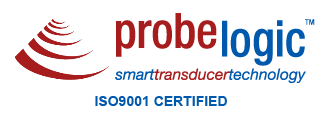ProbeLogic will be running the 1-Day ultrasound technical training course
We are getting more calls from biomedical engineering departments for advice on how best to maintain their ultrasound equipment. With the “tightening of purse strings” more hospitals are relying on their biomedical departments to have a “quick look” before calling the manufacturer.
Biomedical engineers are expected to take on more and more equipment ranging from infusion pumps to ventilators. Unfortunately imaging equipment is often overlooked or seen to be too specialized.
ProbeLogic are pleased to be able to provide training to enable the hospital biomedical engineer to speak with confidence to the sonographers and isolate quickly the nature of the reported problem:
Do you know the answers to these questions?Why is slight damage to a transducer so important?
Does it matter if the acoustic lens is damaged?
Does it matter if the cable is damaged? It still seems to work!
Do you know how the following laws of physics apply to YOUR ultrasound system?
1. the speed of ultrasound through human tissue is 1540m/s
2. Signal loss in the human body is approx. 0.5dB/cm/MHz
3. For every -3dB, half the power is lost
4. For maximum power transfer X(L)=X(C) (resonance)
So why is this important to us?
If we are using a transducer with a primary frequency of 6Mhz at a depth of 10cm. That is 20cm for the reflected signal to return to the probe. That results in 60dB loss. That is one millionth of the power of the original transmitted signal. Any cut, blister or delamination of the acoustic lens will drastically reduce this already very weak signal.
Any sort of damage to the cable will affect the TX/RX of the signal, resulting again in a loss of signal.
Often this loss of signal cannot be seen in the B-Mode image as the sonographer will turn up the gain to compensate. Unfortunately this increases the noise level resulting in very low signal to noise ratios resulting in ‘speckle’ on the color flow and inaccuracies in spectral doppler.
The course contains the following:
- Understanding the modes of an ultrasound system:
- B-Mode
- M-Mode
- PW and CW doppler
- Color flow
- Tissue Harmonic Imaging
- plus more!
- Different transducers, how they work and common faults:
- Phased array
- Linear
- Curved linear
- TOE/TEE
- Plus more!
Contact us to express your interest in the course.



